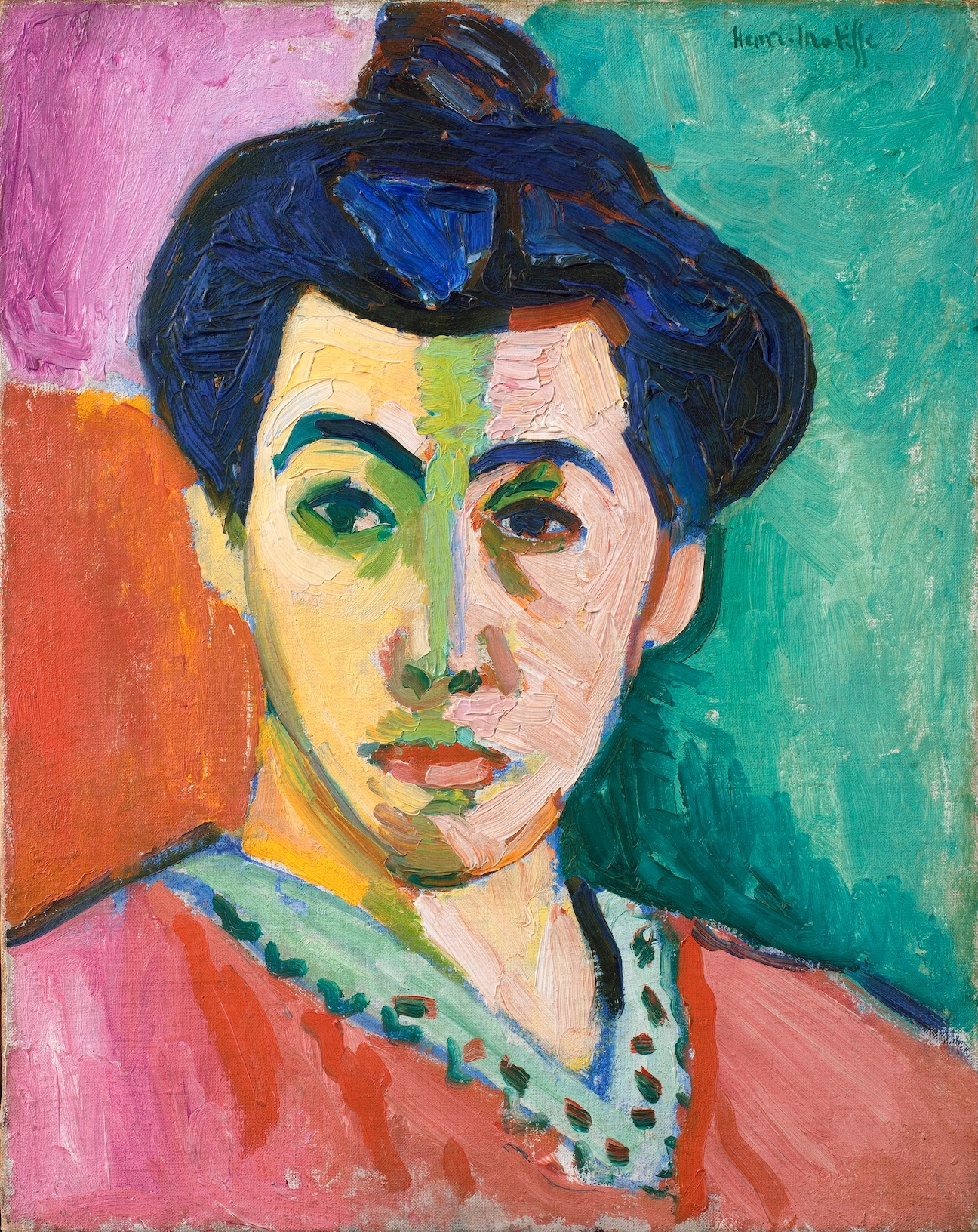
Henri Matisse, The Green Line, 1905, oil on canvas, 40.5 x 32.5 cm (Statens Museum for Kunst, Copenhagen)
Distinctive brushwork
Fauvism developed in France to become one of the first new artistic styles of the 20th century. In contrast to the dark, vaguely disturbing nature of much fin-de-siècle, or turn-of-the-century, Symbolist art, the Fauves produced bright cheery landscapes and figure paintings, characterized by pure vivid color and bold distinctive brushwork.
“Wild beasts”
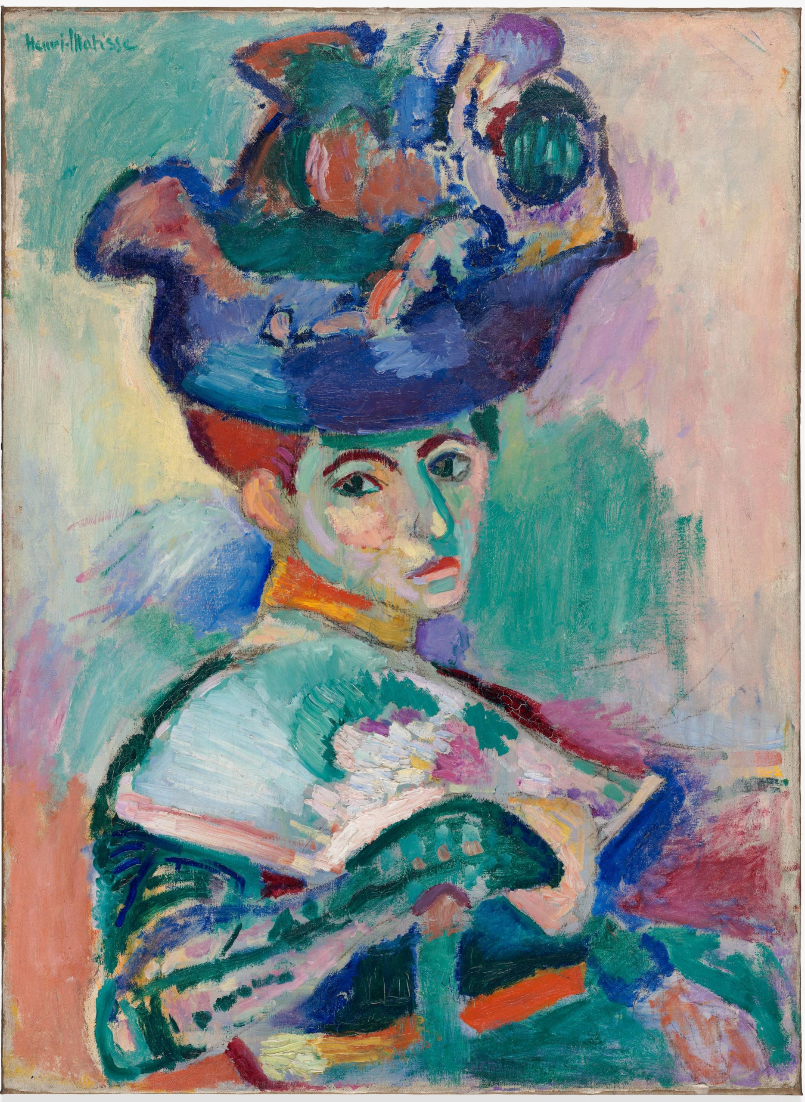
Henri Matisse, Woman with a Hat, 1905, oil on canvas, 79.4 x 59.7 cm (San Francisco Museum of Modern Art)
When shown at the 1905 Salon d’Automne in Paris, the contrast to traditional art was so striking it led critic Louis Vauxcelles to describe the artists as “Les Fauves” or “wild beasts,” and thus the name was born.
One of several Expressionist movements to emerge in the early 20th century, Fauvism was short lived, and by 1910, artists in the group had diverged toward more individual interests. Nevertheless, Fauvism remains significant for it demonstrated modern art’s ability to evoke intensely emotional reactions through radical visual form.
The expressive potential of color
The best known Fauve artists include Henri Matisse, André Derain, and Maurice Vlaminck who pioneered its distinctive style. Their early works reveal the influence of Post-Impressionist artists, especially Neo-Impressionists like Paul Signac, whose interest in color’s optical effects had led to a divisionist method of juxtaposing pure hues on canvas. The Fauves, however, lacked such scientific intent. They emphasized the expressive potential of color, employing it arbitrarily, not based on an object’s natural appearance.
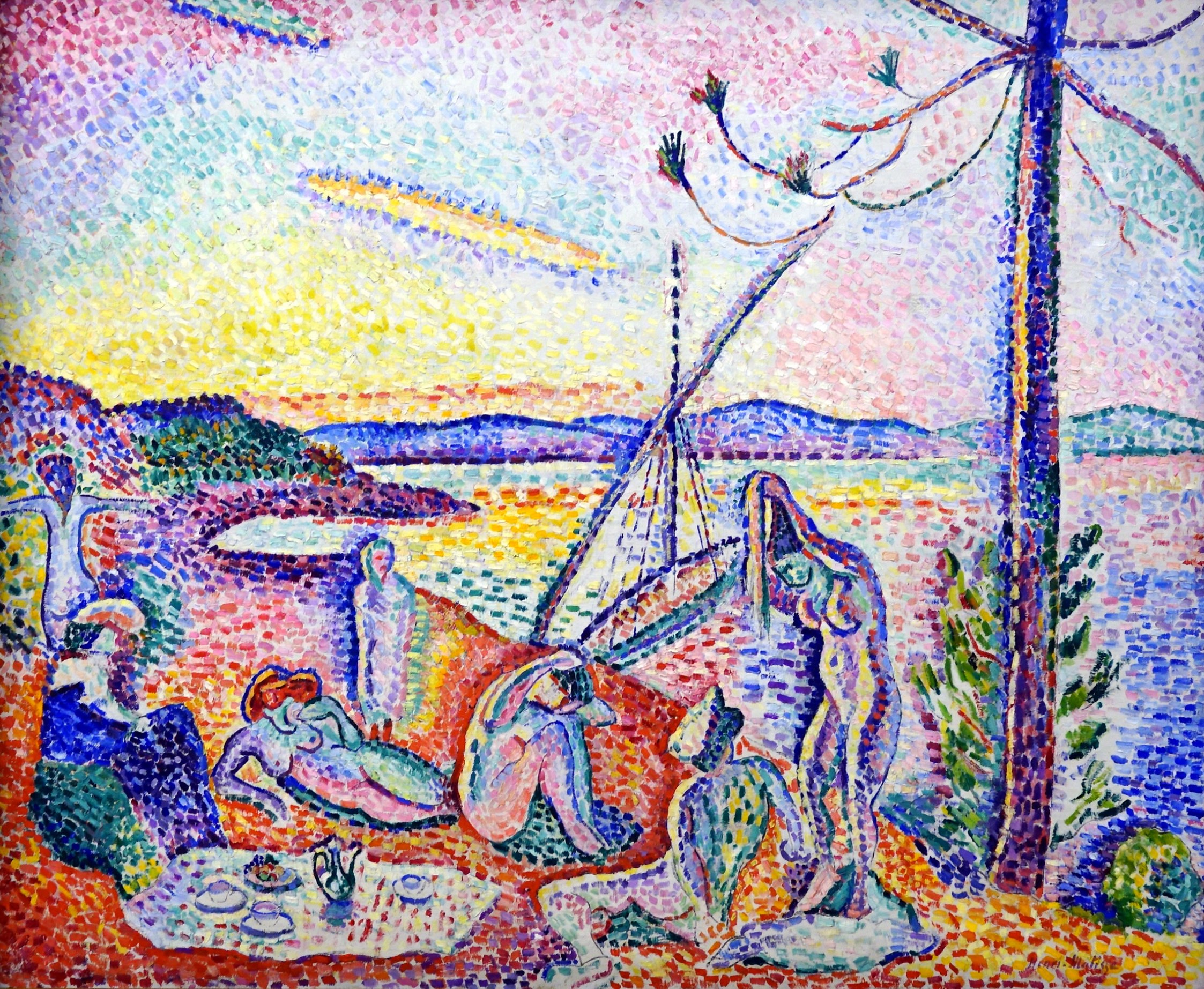
Henri Matisse, Luxe, Calme et Volupté, 1904, oil on canvas, 98.5 x 118.5 cm (Museé d’Orsay, Paris; photo: Steven Zucker, CC BY-NC-SA 2.0)
In Luxe, calm et volupté (1904), for example, Matisse employed a Pointillist style by applying paint in small dabs and dashes. Instead of the subtle blending of complementary colors typical of the Neo-Impressionist painter Georges Seurat, for example, the combination of fiery oranges, yellows, greens and purple is almost overpowering in its vibrant impact.
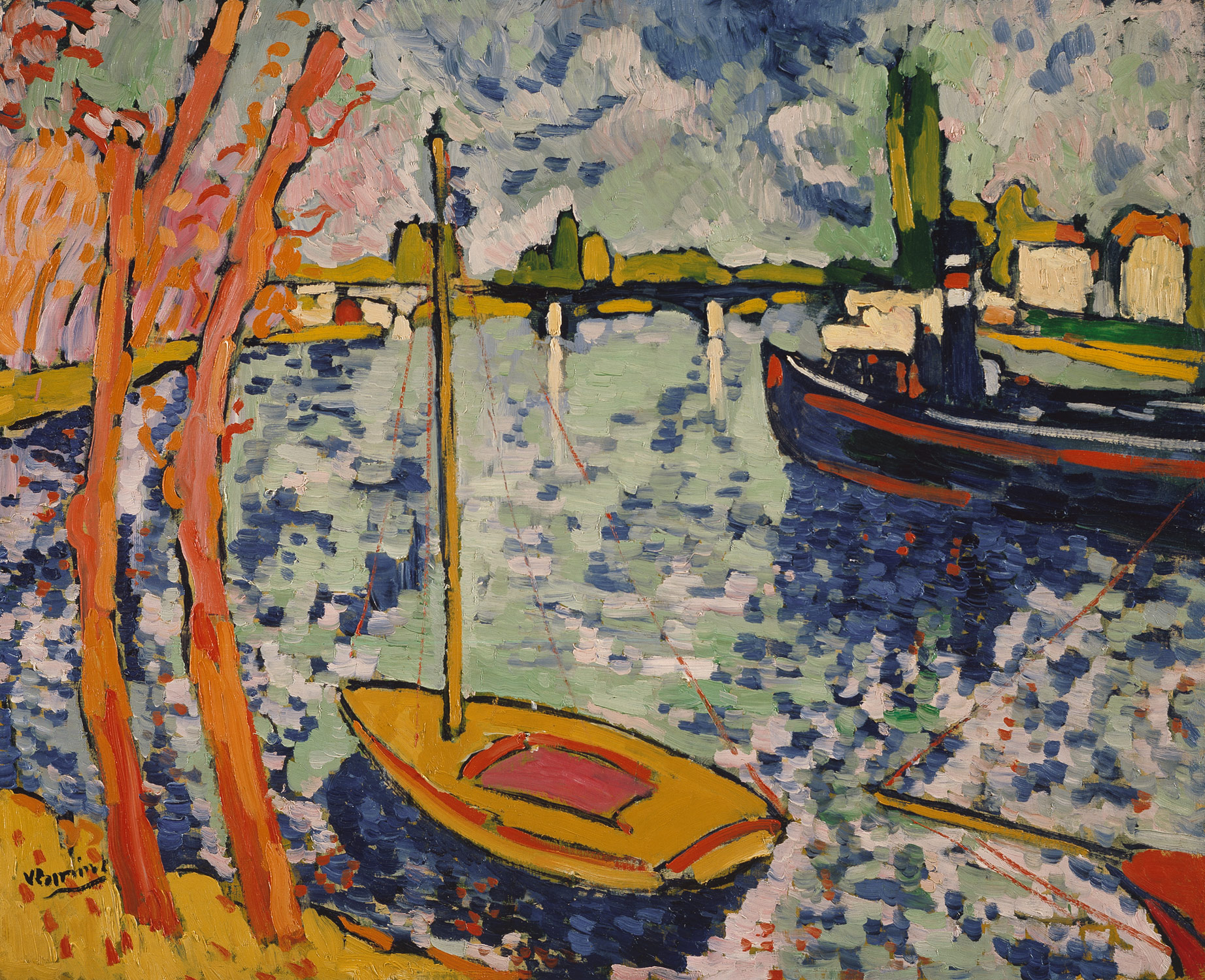
Maurice de Vlaminck, The River Seine at Chatou, 1906, oil on canvas, 82.6 x 101.9 cm (The Metropolitan Museum of Art, New York)
Similarly, while paintings such as Vlaminck’s The River Seine at Chatou (1906) appear to mimic the spontaneous, active brushwork of Impressionism, the Fauves adopted a painterly approach to enhance their work’s emotional power, not to capture fleeting effects of color, light or atmosphere on their subjects. Their preference for landscapes, carefree figures and lighthearted subject matter reflects their desire to create an art that would appeal primarily to the viewers’ senses.
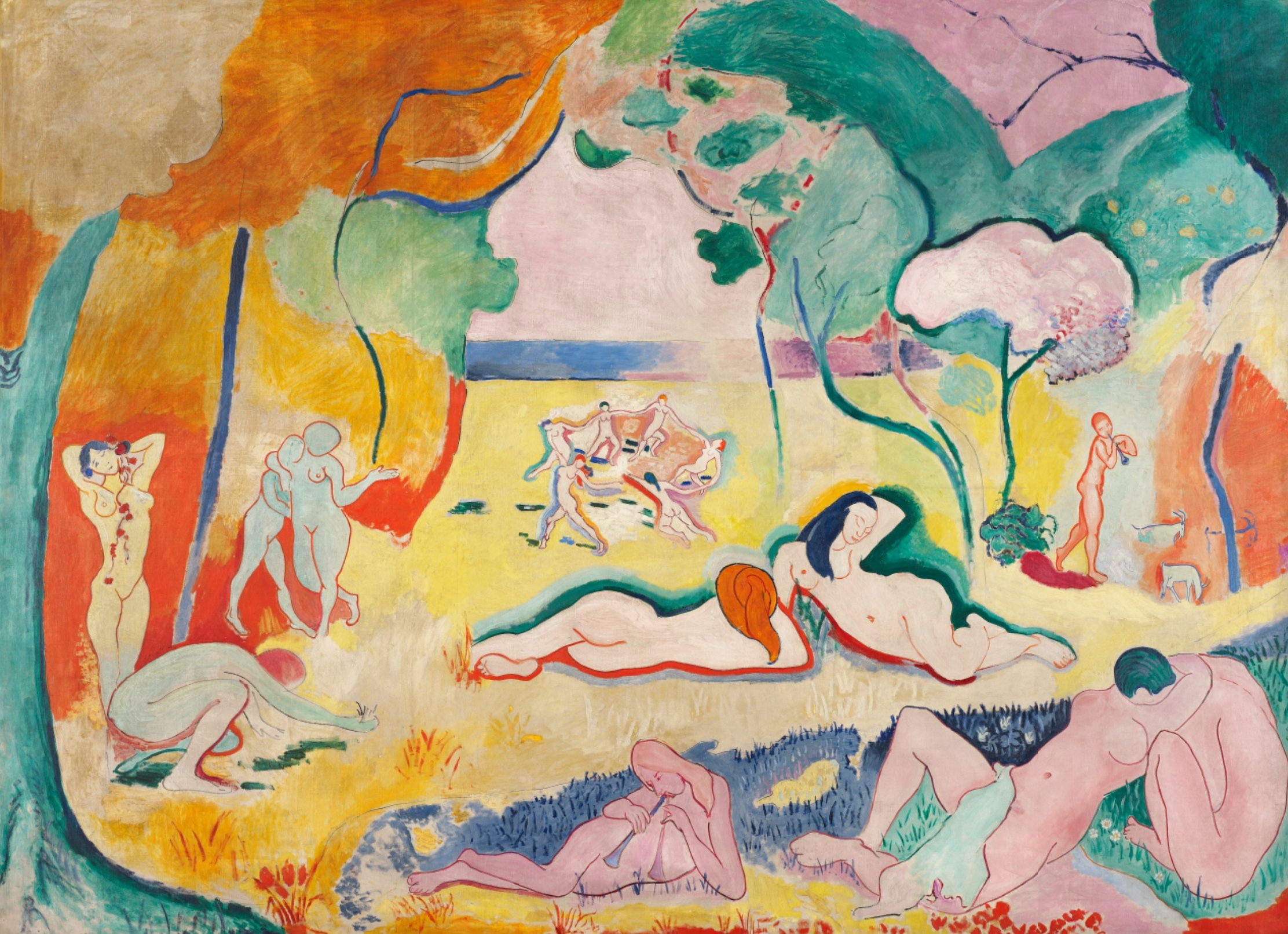
Henri Matisse, Bonheur de Vivre (Joy of Life), 1905–06, oil on canvas, 176.5 x 240.7 cm (Barnes Foundation, Philadelphia)
Paintings such as Matisse’s Bonheur de Vivre (1905–06) epitomize this goal. Bright colors and undulating lines pull our eye gently through the idyllic scene, encouraging us to imagine feeling the warmth of the sun, the cool of the grass, the soft touch of a caress, and the passion of a kiss.
Like many modern artists, the Fauves also found inspiration in objects from Africa and other non-western cultures. Seen through a colonialist lens, the formal distinctions of African art reflected current notions of Primitivism—the belief that, lacking the corrupting influence of European civilization, non-western peoples were more in tune with the primal elements of nature.
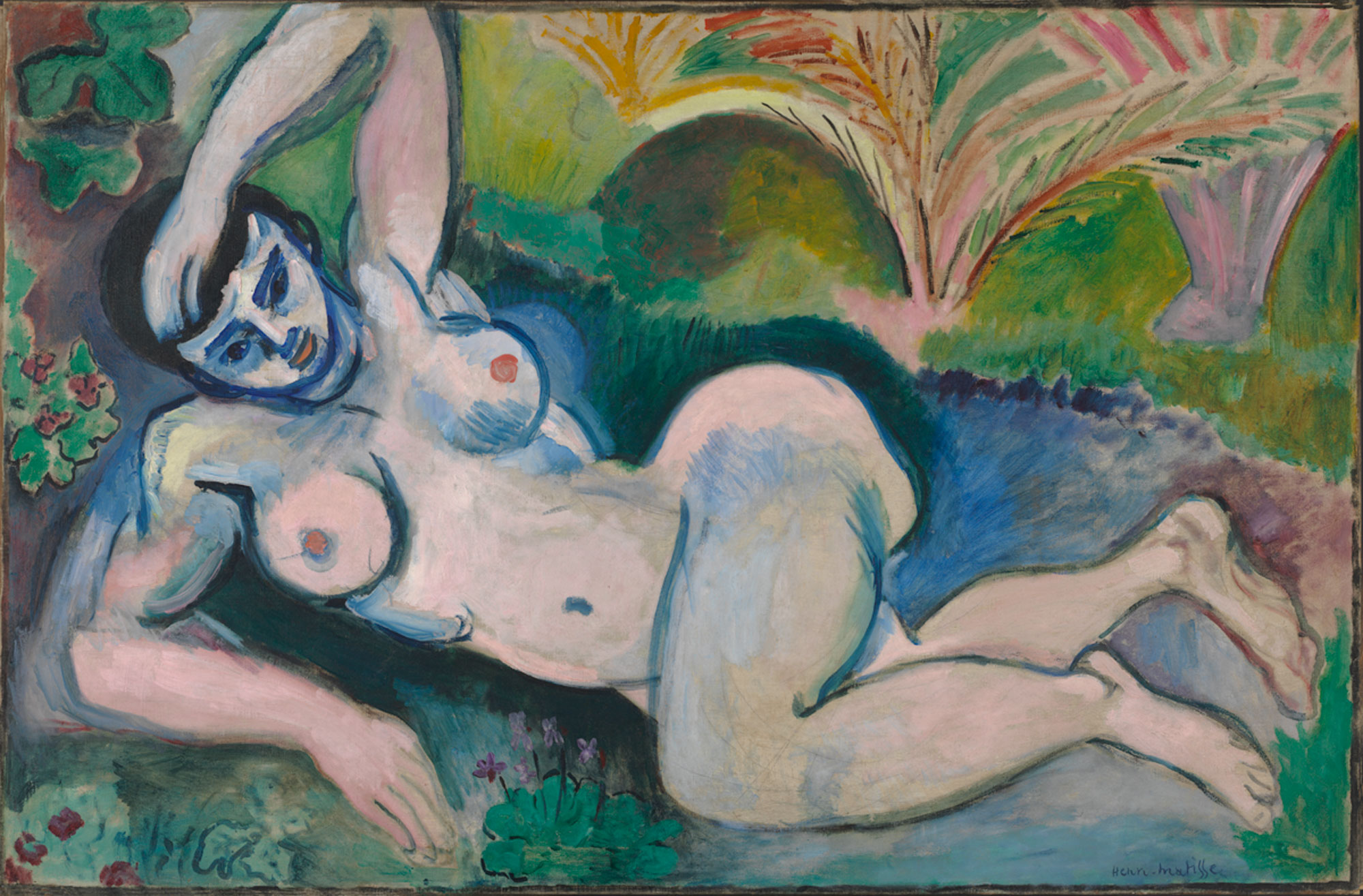
Henri Matisse, The Blue Nude (Souvenir de Biskra), 1907, oil on canvas, 92.1 x 140.3 cm (Baltimore Museum of Art)
Blue Nude (Souvenir of Biskra) of 1907 shows how Matisse combined his traditional subject of the female nude with the influence of primitive sources. The woman’s face appears mask-like in the use of strong outlines and harsh contrasts of light and dark, and the hard lines of her body recall the angled planar surfaces common to African sculpture. This distorted effect, further heightened by her contorted pose, clearly distinguishes the figure from the idealized odalisques of Jean-Auguste-Dominique Ingres and painters of the past.
The Fauves’ interest in Primitivism reinforced their reputation as “wild beasts” who sought new possibilities for art through their exploration of direct expression, impactful visual forms and instinctual appeal.
Additional resources
Read Modern Art, Colonialism, Primitivism, and Indigenism: 1830–1950, a Reframing Art History chapter.
Fauvism at The Metropolitan Museum of Art’s Timeline of Art History.
African Influences in Modern Art at The Metropolitan Museum of Art’s Timeline of Art History.
Smarthistory images for teaching and learning:
[flickr_tags user_id=”82032880@N00″ tags=”FauveIntro,”]

